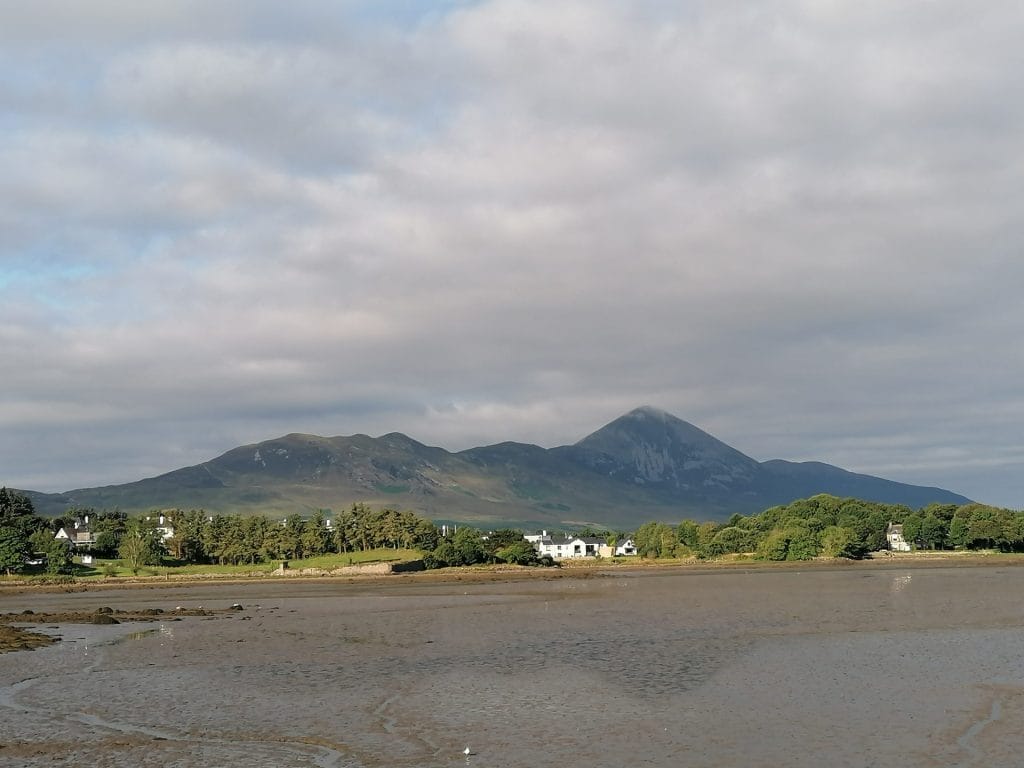Croagh Patrick Reflection on Reek Sunday

Photo: Gertie Foley
Peadar O’Callaghan: IMAGING THE FUTURE FROM THE REEK
What horizon will pilgrims see in the far distance from the top of Croagh Patrick today? What dreams will it nourish? Even if it is misty or foggy one wonders will it catch the imagination of people like St. Brendan who had his own mountain to climb in The Kingdom.
Forty-three years ago, another man realized his dream when curiosity took him over and beyond the horizon and he arrived at his destination. On June 26, 1977, Tim Severin’s ‘Brendan’ touched the New World at Peckford Island, Newfoundland, after a voyage of over13 months and travelling 4,500 miles.
The long life and the many extraordinary voyages of Tim Severin (1940-2020) embodied all the enchantment of a boy’s dreams of ‘going to sea’ realized in one lifetime. The ‘Brendan’ voyage which took him across the Atlantic in an ox-hide leather boat captivated many imaginations and taught us, like St Brendan, the Navigator, that life is dull without a horizon.
In his inaugural lecture delivered at Royal Holloway College on 26 May 1977 (just a month before Tim Severin walked ashore in Newfoundland) Peter Brown said to the student body: “It is only too easy to present the study of history in a modern university system as if it were a discipline for the mind alone, and so to ignore the slow and erratic processes which go to the enrichment of the imagination.” Peter Brown often invited ‘distinguished historians’ to deliver papers at Royal Holloway, among them was Kathleen Hughes the author of The Church in Early Irish Society (1966). She died on 20 April 1977. She had spoken on the relation between sanctity and pilgrimage among the holy men and women of early medieval Ireland, (Brown, 1982). Something of this world was brought vividly alive for us too in the film The Camino Voyage (Iomramh an Chamino). This critically acclaimed film captures the rollicking 2,500 miles of a sea journey that was three years in the making. Four men went to sea in a traditional currach, embarking from Dublin on pilgrimage to Santiago de Compostela.
Carl Jung describes in Memories, Dreams, Reflections (1963) how, when under “constant inner pressure” his return to the childhood activity of building villages of sticks and stones brought him new insights and allowed him open doors to his unconscious. Among these childhood games Jung found the building-blocks of his psychology. Peter Brown has observed: “… in the history of a religion, shifts in the basic building blocks that structure the imaginative world of believers are more significant, in the long run, than are changes in dogma. For shifts in the area of the religious imagination point the way to profounder changes in worldview and in religious practice.” (The Rise of Western Christendom – Tenth Anniversary Revised Edition, Wiley-Blackwell, 2013, xliv.)
How wonderful to have mountains to climb and seas to cross – to enrich our imaginations every day – and dream dreams at night. Croagh Patrick will not be diminished I’m sure if some pilgrims bring home a few stones from their climb today.
